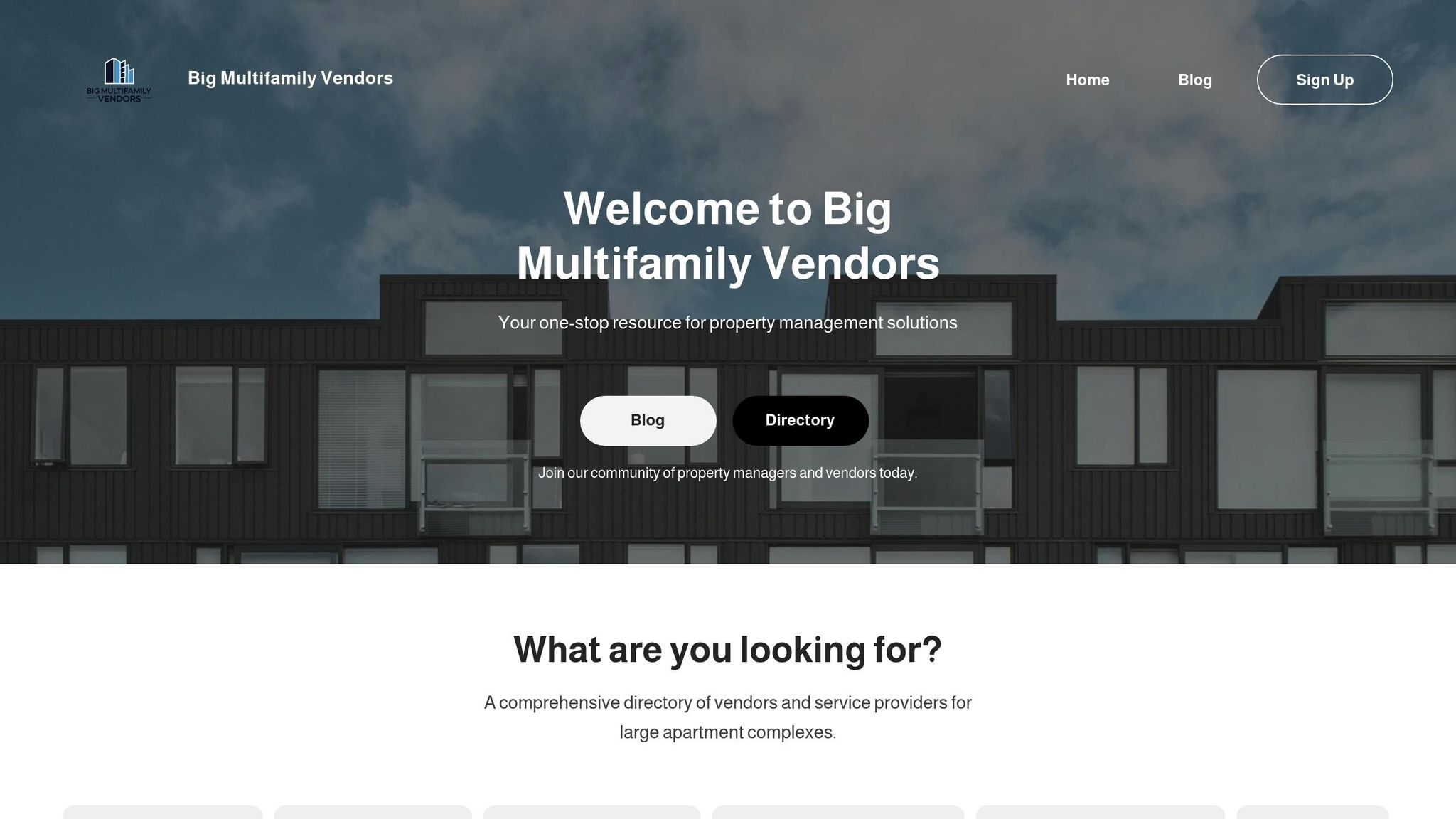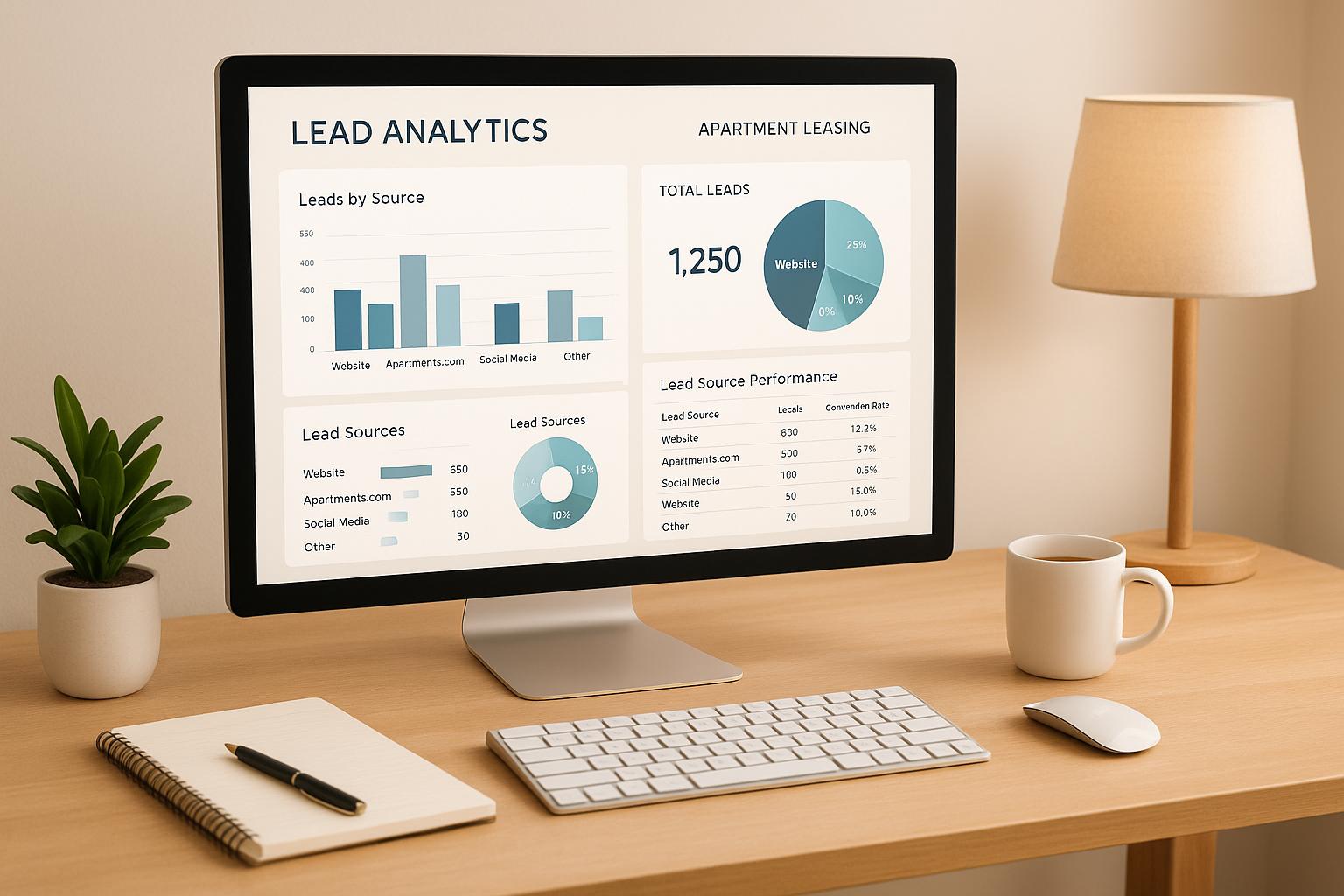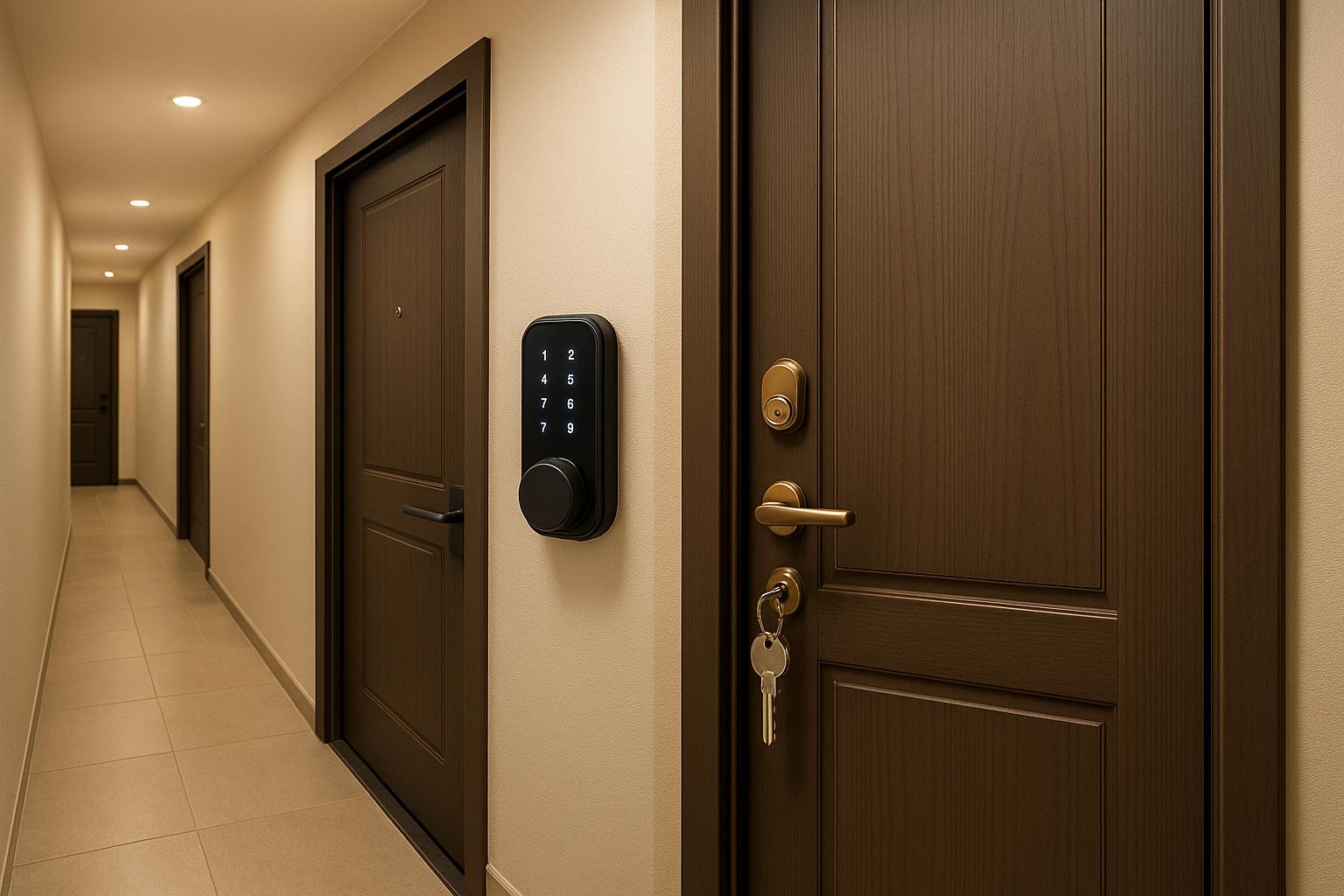- Premiums have doubled since 2021, with a 45% spike in 2024 alone.
- Deductibles soared by 412% from 2023 to 2024, adding financial strain.
- Natural disasters, inflation, and reduced insurer competition are driving up rates.
- Insurance and utilities now account for 17% of expense growth, up from 8%.
Key Solutions:
- Bundle Policies: Save 10%-25% by consolidating insurance with one provider.
- Add Safety Features: Fire sprinklers, smoke detectors, and security systems lower risks and premiums.
- Annual Risk Reviews: Spot vulnerabilities and negotiate better coverage terms.
- Work With Experienced Vendors: Choose insurers specializing in multifamily properties for tailored solutions.
By taking these steps, you can manage rising costs and protect your investments.
What Drives Insurance Costs for Apartment Buildings
Understanding what influences insurance premiums is crucial if you're looking to manage these costs effectively. By identifying the factors that drive premiums, you can implement strategies to help control rising rates. Several elements come into play when determining how much you'll pay, and being aware of them can guide your decisions about property management.
Main Cost Factors for Apartment Insurance
One of the biggest influences on your premiums is the age and condition of the property. Older buildings with outdated systems - like electrical panels, plumbing, or heating equipment - tend to have higher premiums. These aging components are more likely to fail, increasing the chances of fires, water damage, and other costly issues.
Location is another major factor. Properties in areas prone to natural disasters, such as hurricanes or wildfires, often face significantly higher premiums. For instance, coastal properties can see rates that are 15% to 25% higher than those in inland locations [3]. Additionally, local crime rates and proximity to emergency services play a role. Urban properties may face higher costs due to crime, while rural ones can see increased rates because they’re farther from fire stations or other emergency services [4].
Your property’s claims history also impacts your rates. Even if your property has never had a claim, you’re not immune to premium hikes. One property owner with a spotless claims record still experienced a staggering 200% increase in premiums [1].
Investing in safety upgrades, such as modern fire suppression systems or security features, can help reduce premiums by showing insurers that you’re actively managing risks.
Finally, the type and size of the property also matter. Larger buildings or those with unique features often come with higher insurance costs.
These factors don’t exist in isolation. They interact with broader market trends that further influence insurance pricing.
Market Changes Affecting Insurance Rates
Beyond the specifics of your property, larger market forces are reshaping insurance costs. One of the most significant drivers is the rising number of climate-related disasters. Since 2019, the U.S. has averaged about 20 catastrophic events per year that caused at least $1 billion in damages. In 2023 alone, there were 28 such events, up from 18 in 2022 [5]. These frequent and costly disasters have forced insurers to rethink how they assess risks.
In some high-risk areas, insurers are pulling out of the market entirely. States like Texas and Florida have seen insurers withdraw due to hurricane risks and flood zones [2]. This reduces competition and gives the remaining insurers more control over pricing.
Inflation is another factor driving up premiums. With the rising costs of materials, labor, and repairs, insurers are paying out more for claims than ever before. These increased expenses are passed down to property owners [2].
Adding to the pressure is a shrinking reinsurance market. Reinsurance companies, which back up insurers, have faced their own significant losses. As they raise rates or reduce coverage, these costs eventually trickle down to property owners [2].
The impact of these market forces varies by region. Some areas are seeing a slowdown in rate increases, while others continue to face steep hikes. On average, multifamily insurance costs have jumped to around $65 per unit per month as of November 2023 - a 119% increase over four years [2].
How to Lower Your Insurance Costs
Insurance costs may be rising, but property owners can take actionable steps to reduce their premiums. By managing policies carefully and addressing potential risks, you can save money while maintaining solid coverage.
Bundle Your Insurance Policies
Combining multiple property insurance policies with a single provider can lead to significant savings. In fact, bundling policies often results in discounts ranging from 10% to 25% [9]. Beyond the cost benefits, bundling simplifies your insurance management by offering consolidated billing, synchronized renewal dates, and a single point of contact for claims [7][8].
That said, bundling isn’t always the cheapest option. Be sure to compare quotes from different providers to confirm that the bundled rate is actually more affordable than purchasing separate policies [7]. Working with an independent insurance agent can also give you access to a wider pool of providers, helping you secure the best deal overall [6].
Add Risk Reduction Measures
Investing in safety and risk management measures can directly impact your insurance premiums. Upgrades like fire sprinklers, modern smoke detectors, and advanced security systems often qualify for substantial discounts [10]. Regular maintenance - such as routine checks on HVAC, plumbing, and electrical systems - further demonstrates your commitment to minimizing risks, reducing the likelihood of expensive claims [10].
Energy-efficient and environmentally friendly upgrades can also work in your favor. Many insurers offer discounts for properties that use safer, modern materials and systems [11]. After implementing these improvements, it’s essential to review your risk management strategies annually to ensure they remain effective and up to date.
Do Annual Risk Reviews
A yearly risk assessment can help you spot vulnerabilities before they turn into expensive claims. Engaging tenants during these reviews is particularly useful, as their feedback may highlight overlooked safety concerns, such as broken locks or malfunctioning smoke detectors [12].
Leverage your property management system to analyze claims history and maintenance trends each year. This data can guide you in optimizing your coverage and ensuring it remains cost-effective [12][13].
Treat these reviews as an ongoing process. Make the necessary changes, monitor their impact, and use your findings to negotiate better terms with your insurance provider. Regular assessments not only help you manage risks but can also strengthen your position when discussing premiums.
sbb-itb-58157f8
Pick the Right Vendors to Cut Insurance Costs
Selecting the right vendors is a smart way to lower insurance expenses and reduce risks for apartment portfolios. Here's how to make informed choices.
Big Multifamily Vendors

Big Multifamily Vendors serves as a valuable resource for fine-tuning your insurance approach. Their vendor directory connects you with professionals who specialize in multifamily properties, ensuring you find the right expertise. The blog features articles like "How Insurance Premiums Are Calculated for Multifamily Properties", offering insights tailored to your needs. Subscribers also benefit from a private content archive and email newsletters that keep them informed about industry trends, regulatory updates, and new ways to save on insurance.
Other Insurance Companies for Multifamily Properties
When evaluating insurance providers, focus on those with a proven track record in multifamily property coverage. Avoid generic commercial policies and instead choose vendors offering solutions specifically designed for apartment complexes. Financial stability is key - check ratings from agencies like A.M. Best, Standard & Poor's, and Moody's to ensure the insurer is reliable and capable of handling claims.
Efficient claims processing is another critical factor. Ask for references from other multifamily clients to understand how well the insurer communicates and resolves claims. Also, assess their technology platforms - intuitive online tools for managing policies, filing claims, and accessing documents can make a huge difference in your day-to-day operations.
Look for vendors that go beyond basic coverage. Services like risk management consultations, access to preferred contractors, or educational resources can add real value to your insurance strategy. Experience matters too - partnering with insurers who understand the unique challenges of multifamily properties, such as tenant-related risks and seasonal issues, can help you manage your portfolio more effectively. Finally, check customer reviews on platforms like Trustpilot, the Better Business Bureau, or the National Association of Insurance Commissioners (NAIC) website to get honest feedback on the vendor’s performance.
Here’s a quick guide to evaluating potential vendors:
| Evaluation Criteria | What to Look For | Red Flags |
|---|---|---|
| Financial Stability | A.M. Best rating of A- or higher; consistent ratings across agencies | Declining ratings; limited financial data |
| Multifamily Experience | Long-standing expertise in apartment insurance; strong references | Generic commercial focus; lack of specialization |
| Technology Platform | User-friendly tools, mobile access, automated reporting | Outdated systems; reliance on manual processes |
| Claims Processing | Quick resolutions (under 30 days); dedicated multifamily adjusters | Slow response times; generic handlers |
| Risk Management Support | On-site assessments, preferred vendor networks, loss prevention resources | Basic coverage with no added services |
Key Steps to Lower Your Insurance Costs
Lowering your insurance costs doesn't have to be a guessing game. By taking a few targeted actions, you can save money while maintaining the coverage you need. Let’s break it down.
Bundle Your Policies
Combining your policies - like home, auto, and life insurance - can unlock multi-policy discounts, potentially saving you a significant amount of money [15]. Plus, bundling makes managing your insurance simpler since you’ll work with one representative who has a clear picture of all your coverage.
Invest in Risk Reduction
Adding safety features to your property can directly impact your premiums. Think about installing fire sprinklers, smoke detectors, or security systems. These upgrades lower the risk of incidents, which in turn reduces the likelihood of filing claims [10]. On top of that, staying on top of routine maintenance can prevent small problems from turning into expensive claims down the road [10].
Review Your Coverage Regularly
An annual review of your insurance policies helps ensure your coverage matches your needs and reflects any changes in the market. This step keeps your insurance aligned with your current situation and avoids paying for coverage you no longer require.
Work With an Insurance Broker
Brokers can be a great resource for finding savings. Their industry knowledge and access to a wide range of insurance products might uncover options or discounts you didn’t know existed [14].
FAQs
What are the best strategies for property owners to negotiate better insurance terms during annual reviews?
To secure improved insurance terms during annual reviews, property owners should begin by carefully examining their current policy. This helps clarify what’s covered and pinpoints areas that might need adjustments. By understanding the fine print, you can identify opportunities to negotiate.
One effective strategy is to emphasize proactive risk management efforts. For instance, if you’ve installed safety systems, like fire alarms or security cameras, or if you’ve been diligent with regular maintenance, make sure to highlight these steps. These actions show insurers that you’ve minimized risks, which could lead to better terms.
It’s also helpful to prepare a comprehensive building profile. Include details about recent upgrades, safety improvements, occupancy rates, and any other relevant updates. This information not only strengthens your case but also demonstrates your commitment to maintaining a safe and well-managed property. Clear communication and solid evidence of reduced risks can go a long way in securing lower premiums and improved coverage during renewal discussions.
What safety upgrades can help lower insurance premiums for apartment buildings?
Upgrading the safety features in your apartment buildings can be a smart move to help lower insurance premiums. Key upgrades to focus on include fire sprinklers, smoke detectors, fire alarms, and security systems. These measures address risks like fire and theft, which insurers often take into account when offering discounts.
Taking it a step further, you might want to invest in comprehensive fire protection systems and ensure these safety measures are regularly maintained. Not only do these improvements make the building safer for tenants, but they also show insurers that you're actively managing risks - potentially leading to noticeable savings on premiums.
How is the reinsurance market affecting insurance costs for multifamily properties?
The reinsurance market is playing a major role in driving up insurance costs for multifamily properties across the U.S. In 2023, reinsurance rates surged by 35% - the largest increase seen in 17 years. This steep hike has directly translated into higher insurance premiums for property owners.
On top of that, climate-related risks, like extreme weather events, are adding even more pressure to costs. These challenges are creating financial strain for multifamily operators, making it crucial to consider strategies like bundling insurance policies, performing thorough risk assessments, and adopting loss prevention measures to help control expenses.


